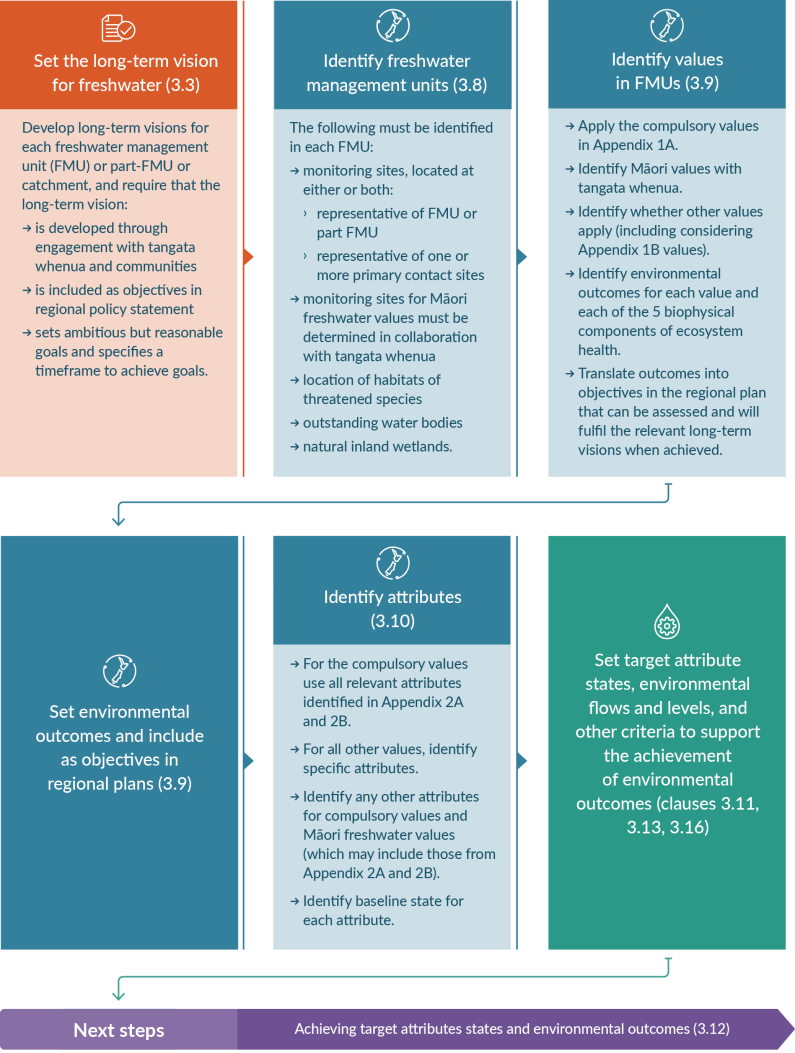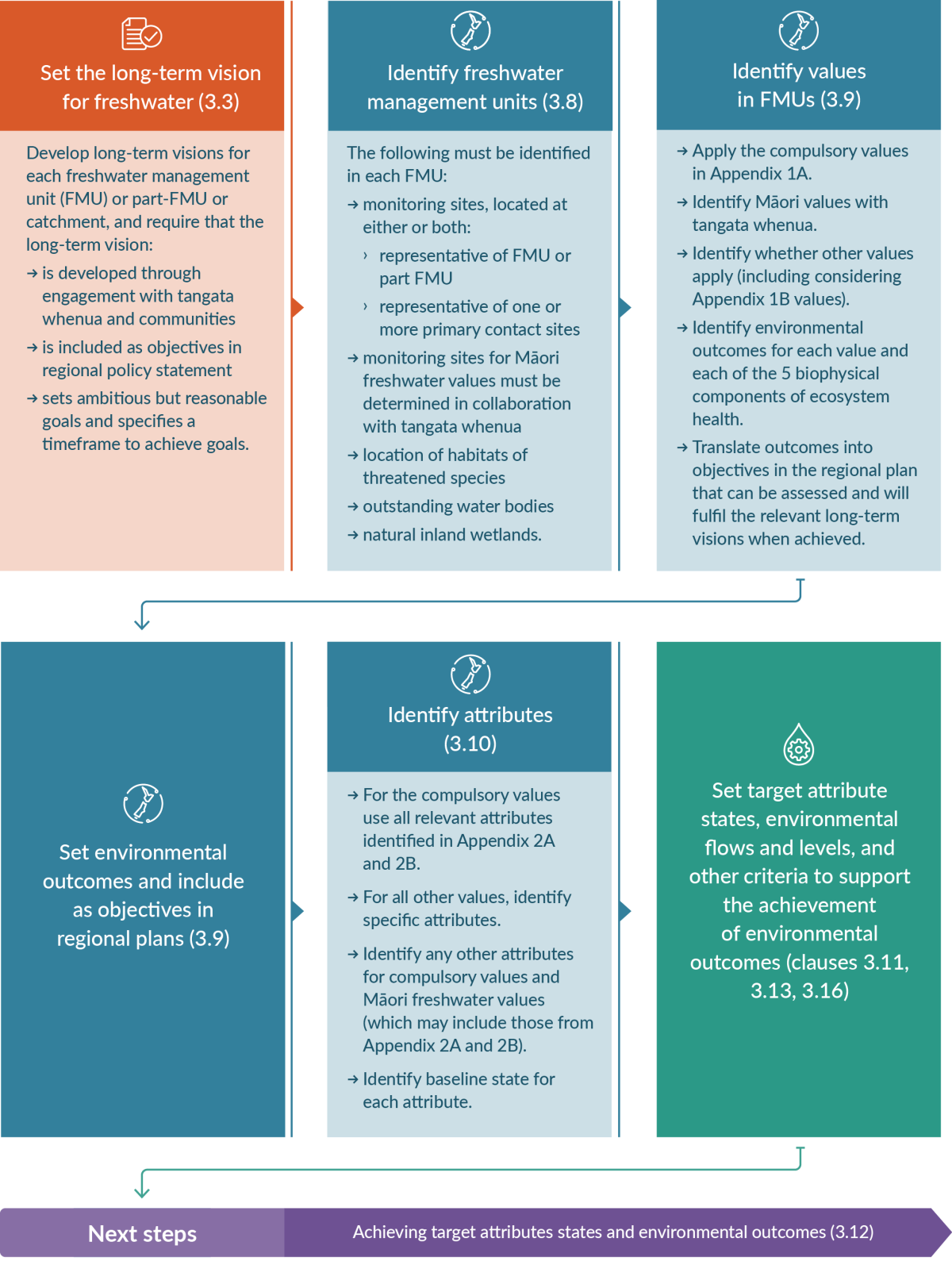Clause 3.9: Identifying values and setting environmental outcomes as objectives


Councils must include all environmental outcomes as objectives in their regional plans.
All councils must apply the four compulsory values listed in appendix 1A of the NPS-FM to every FMU:
This has five biophysical components. For each FMU, councils must apply the four compulsory values, and support ecosystem health by managing each of the five biophysical components.
Also consider each of the nine values listed in appendix 1B of the NPS-FM, and determine for each FMU whether they apply. The value of hydro-electric power generation, for example, only needs to be considered for FMUs that are or could be used for this, while keeping in mind the specifications for the five large hydro-electric generation schemes mentioned in clause 3.31. As a second example, councils only need to consider irrigation in FMUs that are currently valued for irrigation, or may be in the future.
Council must engage with the community to identify values, and collaborate with tangata whenua to identify Māori values.
For each value that applies to an FMU or part of an FMU, councils must describe an environmental outcome so that it is possible to assess if, and when, it is achieved. The outcomes must jointly fulfil the long-term visions. Figure 4 shows how clause 3.9 and the following clauses lead the councils from identifying values to setting target attribute states.

Six-step, one-directional flow chart identifying the steps between setting the long-term vision for freshwater and setting targets to achieve environmental outcomes.
Set the long-term vision for freshwater (3.3)
Develop long-term visions for each freshwater management unit (FMU) or part-FMU or catchment, and require that the long-term vision:
Identify freshwater management units (3.8)
The following must be identified in each FMU:
Identify values in FMUs (3.9)
Set environmental outcomes and include as objectives in regional plans (3.9)
Identify attributes (3.10)
Set target attribute states, environmental flows and levels, and other criteria to support the achievement of environmental outcomes (clauses 3.11, 3.13, 3.16)
Next Steps
Achieving target attributes states and environmental outcomes (3.12).

Six-step, one-directional flow chart identifying the steps between setting the long-term vision for freshwater and setting targets to achieve environmental outcomes.
Set the long-term vision for freshwater (3.3)
Develop long-term visions for each freshwater management unit (FMU) or part-FMU or catchment, and require that the long-term vision:
Identify freshwater management units (3.8)
The following must be identified in each FMU:
Identify values in FMUs (3.9)
Set environmental outcomes and include as objectives in regional plans (3.9)
Identify attributes (3.10)
Set target attribute states, environmental flows and levels, and other criteria to support the achievement of environmental outcomes (clauses 3.11, 3.13, 3.16)
Next Steps
Achieving target attributes states and environmental outcomes (3.12).
Values (other than the four compulsory values, which apply everywhere) can apply to all or part of an FMU. Non-compulsory values like ‘natural form and character’ may apply to water bodies covered by water conservation orders or where communities identify characteristics listed in the value and want these protected. The values, and where they apply, should be clearly set out in the regional plan.
Maps or other new data-display tools may be useful, either in the plan or online, showing the values and where they apply. This kind of detail will help the council and community envisage the environmental outcomes and eventual limits, and assist future decisions on resource consents.

Clause 3.9: Identifying values and setting environmental outcomes as objectives
July 2022
© Ministry for the Environment